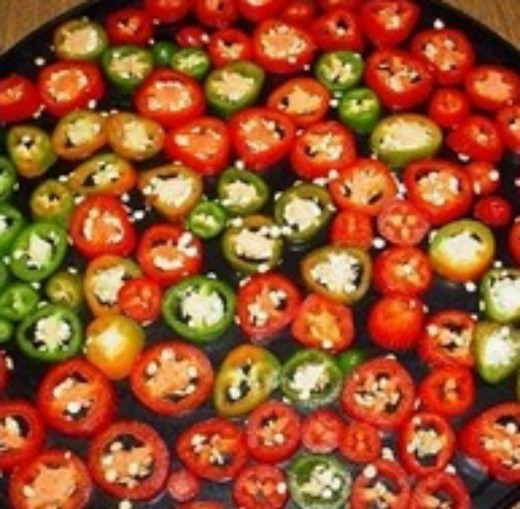How to Dry Food & Dehydrator Recipes
Raw Food Cookies

Dehydrating, or Drying, Food
Dehydrated foods are a convenience because they travel well, are easy to store and always ready to be eaten. They do not need refrigerated after being dehydrated. Nutritionally, dried foods retain more of their nutritional content that foods preserved by canning. They are a perfect health food for a child's lunch, a hiking trip, or an office snack.
The Method
Three things are needed to successfully dry foods at home: heat, dry air, and good ventilation. Food dehydrators are not required for some things like herbs, and peppers. These foods have traditionally been successfully dried by hanging, or in an oven. However, a dehydrator provides consistent heat, and air circulation that will give more consistent results to your dried foods.
How to Dry, or Dehydrate, Apples
Dried apples are wonderful in trail mix, rehydrated for cooking, or simply eaten alone. Here are specific instructions for how to dry your own apples at home.
How to Dry, or Dehydrate, Apricots
Apricots are one of the first summer fruits. The are full of fiber, beta-carotene, and vitamins A and C. Drying, as a method of food preservation makes apricots easy to transport and store.
How to Dry, or Dehydrate, Apricots
How to Dry, or Dehydrate Strawberries
Strawberries, one of the world's most popular berries, are in season and most available April through July. But, strawberries can be enjoyed year round by preserving them. Drying strawberries at home is quick and easy following these dehydration methods.
How to Dry, or Dehydrate, Strawberries

How to Dry Peppers in the Oven
Drying, or dehydrating, is one of the oldest and least altering methods of food preservation. To dry peppers without the sun or a food dehydrator, follow the methods below:
Dry Peppers by Hanging
Peppers hanging from the front door on a hot summer day is a common scene in the southern United States and Mexico. Hanging peppers to dry is the simplest method of preserving them because no special equipment, or oven, is required. Air dried peppers are kept in their whole form and the seeds are retained. Air drying peppers works well on hot summer days, when you do not want to heat up your home using methods that consume energy.
How to Air Dry Peppers
How to Dry Garlic to Make Garlic Powder
Homemade garlic powder is tastier and more flavorful than garlic powder purchased at the store. In addition, you won't have to worry about additives in your homemade garlic powder. Garlic powder is pretty easy to make if you have a dehydrator and a grinder. Slice the garlic thinly, before putting it in the dehydrator. Make sure it is very dry, moisture leaves it sticky and allows the garlic powder to spoil. After the garlic is completely dry and crispy, run it through the grinder.
Comparison of Oven, Dedhydrator, and Air Drying Methods
Drying food can be done by air drying, oven drying, or with a dehydrator. Two critical components of good drying are temperature and air flow. Drying yields the best results if the temperature can be kept constant and air is flowing around the food continually. For this reason a food dehydrator usually yields the best results. You will rarely be disappointed with the outcome of food dried in a dehydrator. They produce good quality dried food.
However, some people may opt to air dry or oven dry because they do not have a dehydrator or they do not want to consumed energy to dry the food. When using the oven, it works best if the temperature can be maintained at a very low setting below 110 degrees. Too often oven dried food browns and looks burnt. If you are choosing the air drying option to limit the consumption of electricity, choose a warm sunny day that they temperature is to be above 90 degrees. Place the food to be dehydrated in a place with consistent air flow. Leafy herbs should be kept out of direct sun light while being dried as it causes them to brown and loose nutrients.
© 2009 hsschulte










